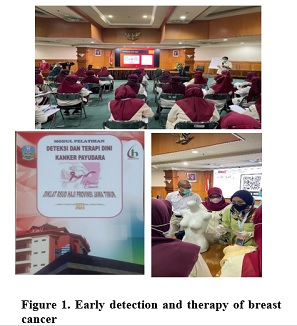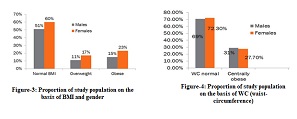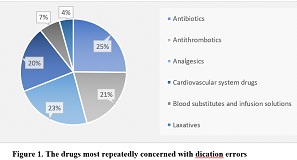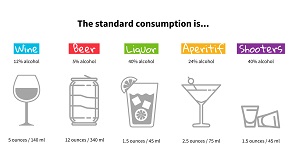CORRELATION OF GADGETS ADDICTION WITH SLEEP QUALITY IN 4th – 6th GRADE STUDENTS AT SDN 01 SRIGADING LAWANG IN 2019

Downloads
The use of digital technology has increased rapidly. In Indonesia, gadget use by children has become very high and requires special attention. Many effects may occur due to gadget use, one of which is sleep quality disturbance. This study aims to analyze the correlation between gadget addiction and sleep quality in children grades 4-6 SDN 01 Srigading Lawang. This research is an analytic observational study with a cross-sectional design in a population of 4-6th graders of SDN 01 Srigading Lawang. A total of 126 students over 130 students were included. Data were collected using two questionnaires, which are Smartphone Addiction Scale and The Pittsburgh Sleep Quality Index, and tested using RxC Contingency. Gadget addiction has a significant correlation with sleep quality with a weak correlation. Children with mild levels of addiction to gadgets had a potential of 2,013 times to have good sleep quality, compared to children with moderate levels of addiction. In contrast, children with severe levels of addiction to gadgets were at risk 12.04-fold to have poor sleep quality compared to the mild level of addiction. There is a significant correlation with a weak correlation between gadget addiction and sleep quality in children grades 4-6 SDN 01 Srigading Lawang.
Fuller, C., Lehman, E., Hicks, S. and Novick, M. 2017. Bedtime use of technology and associated sleep problems in children. Global Pediatric Health 4, 2333794X1773697.
George, M and Odgers, C. 2015. Seven fears and the science of how gadget technologies may be influencing adolescents in the digital age. Perspectives on Psychological Science 10 (6), 832-851
Sundus, M. 2018. The Impact Of Using Gadgets On Children . J Depress Anxiety 6 (4). Available at: https: //www.longdom.org/open-access/the-impact-of-using-gadgets-on-children-2167-1044-1000296.pdf [Accessed 7 October 2019].
Moattari, M, Moattari, F, Kaka, G, Mohseni, H, Naghdi, M. 2017. Smartphone addiction, sleep quality and mechanism . Int J Cogn Behav 1; 002. Available at: https: //clinmedjournals.org/articles/ijcb/international-journal-of-cognition-and-behaviour-ijcb-1-002.php? Jid = ijcb [Accessed 7 October 2019].
Kuula, L, Kull, L, Pesonen, A, Martikainen, S, Kajantie, E. 2015. Poor sleep and neurocognitive function in early adolescence. Sleep Medicine 16(10), 1207-1212.
Halperin, D. 2014. Environmental noise and sleep disturbances: A threat to health ?. Sleep Science 7(4), 209-212.
Kronholm, E, Puusniekka, R, Jokela, J, Villberg, J. 2014. Trends in self-reported sleep problems, tiredness and related school performance among finnish adolescents from 1984 to 2011. Journal of Sleep Research 24 (1), 3-10.
Badri, M, Alnuaimi, A, Yang, G, Rashedi, A, Temsah, K. 2017. School children's use of digital gadgets, social media, and parental knowledge and involvement - the case of Abu Dhabi . Educ Inf Technol 22, 2645-2664.
Unplagan, K, Balasubramanian, B, Premkuma, T, Chien, J. 2018. Impact of electronic gadgets on the life of children: a cross sectional study from Ipoh, Perak, Malaysia . Quest International Journal of Medical and Health Science.
Park, Moon, G, Yang, D. 2014. The moderation effect of smartphone addiction in correlation between self-leadership and innovative behavior. International Journal of Social, Management, Economics, and Business Engineering. 5-8.
Lenhart, A and Madden, M. 2007. Social networking websites and teens. pew interet and american life project. Availableat: http://www.pewinternet.org/media//Files/Reports/2007/PIP_SNS_Data_Memo_Jan_2007.pdf. [Accessed 9 October 2019].
Saifullah, M. 2017. The correlation between the use of gadgets and the sleeping patterns of students at SD Gadingrejo II Pasuruan . Unair's Repository. Available at: http://repository.unair.ac.id/79251/2/FKP.N.251-18%20Sai%20h. pdf [Accessed on: 9 Oct. 2019].
Subrahmanyam, K, Greenfield, P, Kraut, R, Gross, E. 2001. The impact of computer use on children's and adolescents. development. Appl Develop Psychol 22: 7-30 .
Paramita, T and Hidayati, F. 2016. Smartphone addiction in terms of alienation among students of SMAN 2 Majalengka. Journal of Empathy. 5 (4), 858-862.
Hidayat, S. & Mustikasari. 2014. Smartphone use addiction and sleep quality in rik ui students. Available at:http://www.lib.ui.ac.id/naskahringkas/2016-08/S56399-Sarip%20Hidayat [Accessed 9 October 2019].
Hisham, & Murdiana, Sitti & Ridfah, Ahmad. 2018. Smartphone addiction, anxiety, and student sleep quality smartphone addict ion, anxiety, and sleep quality.
Thatte, R. 2018. Gadget addiction . UC Berkeley Sutardja Center. Available at: https://scet.berkeley.edu/reports/gadget-addiction/ [Accessed: 9 Oct. 2019].
Kominfo. 2017. Survey on the use of information and communication technology in 2017. Available at: https://balitbangsdm.kominfo.go.id/?mod=publikasi&a=dl&page_id=36 0 & cid = 9 & download_id = 187 [Accessed 10 October 2019].
Jarmi, A. 2017. The correlation between gadget use and adolescent sleep quality at SMP Negeri 1 Banda Aceh . Available at: https://etd.unsyiah.ac.id/index.php?p=show_detail&id=32688. [Accessed 10 October 2019].
Hysing, M., Pallesen, S., Stormark, K., Jakobsen, R., Lundervold, A. and Sivertsen, B. 2015. Sleep and use of electronic gadgets in adolescence: results from a large population-based study. BMJ Open 5(1), e006748-e006748.
Copyright (c) 2020 Agustin J Nanda De Niro, Annisa Pawitra, Novia Nurul Faizah, Rendra Dwi Putra, Veikha Fakhriya Arfiputri, Renata Violia Sihombing, Shabrina Noor Rachmi, Djohar Nuswantoro, Ledy Martha

This work is licensed under a Creative Commons Attribution-ShareAlike 4.0 International License.
- The journal allows the author to hold the copyright of the article without restrictions.
- The journal allows the author(s) to retain publishing rights without restrictions.
- The legal formal aspect of journal publication accessibility refers to Creative Commons Attribution Share-Alike (CC BY-SA).
- The Creative Commons Attribution Share-Alike (CC BY-SA) license allows re-distribution and re-use of a licensed work on the conditions that the creator is appropriately credited and that any derivative work is made available under "the same, similar or a compatible license”. Other than the conditions mentioned above, the editorial board is not responsible for copyright violation.































